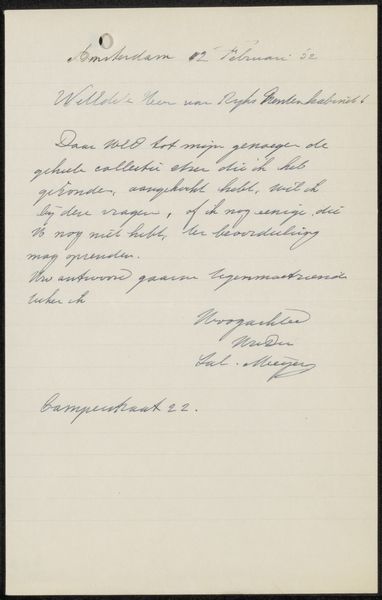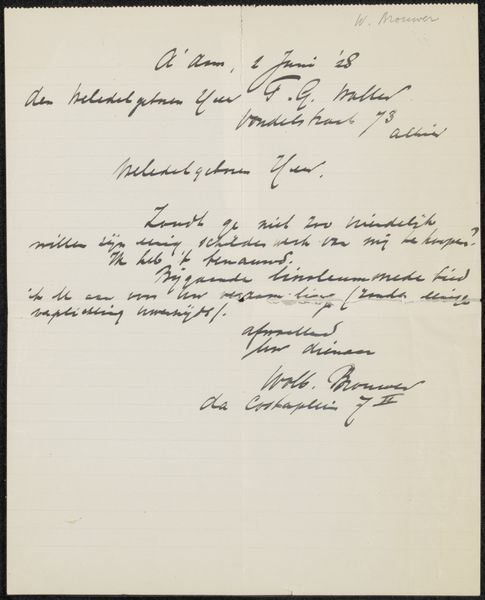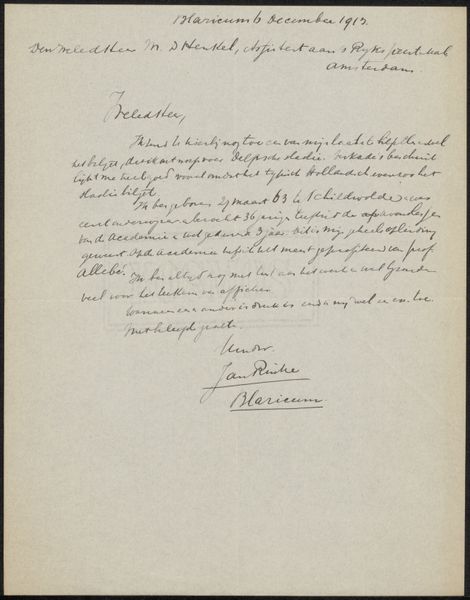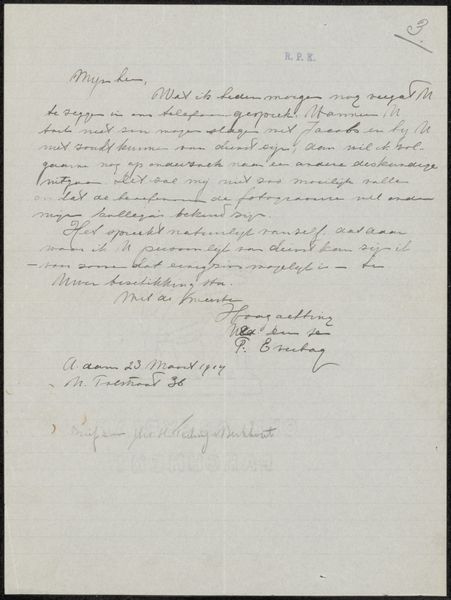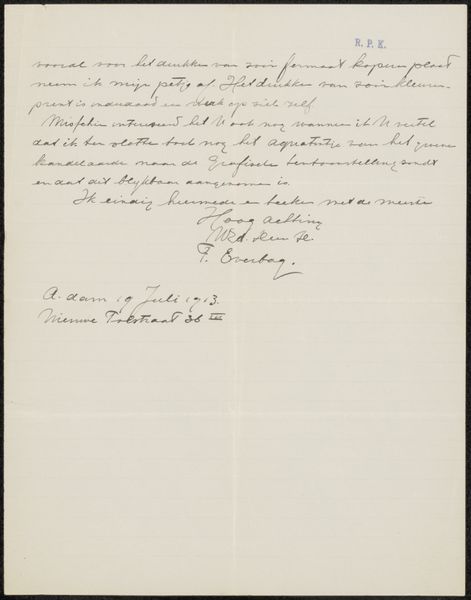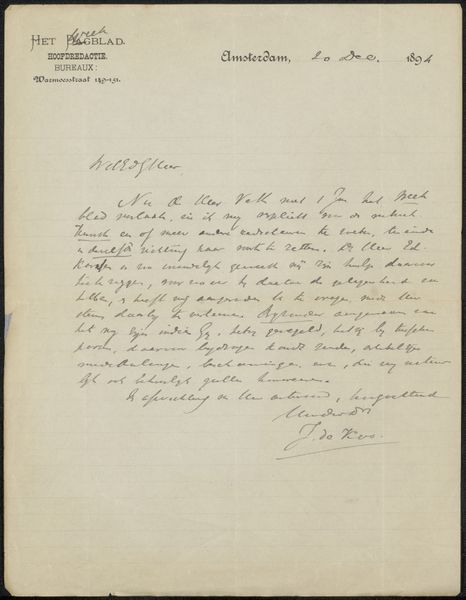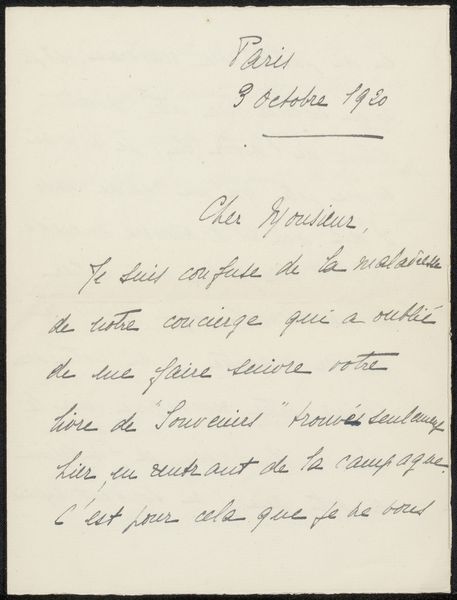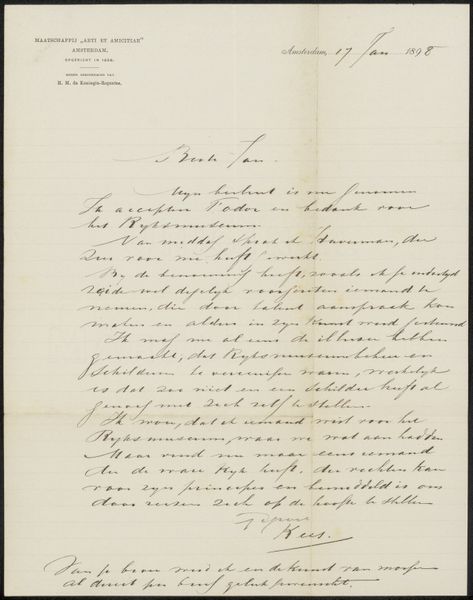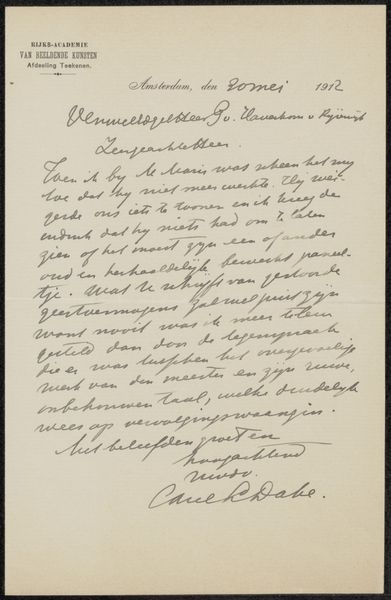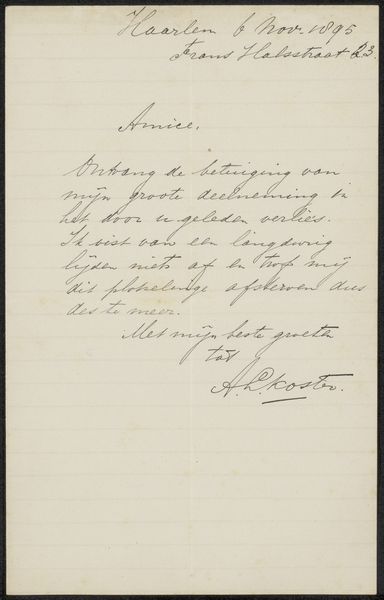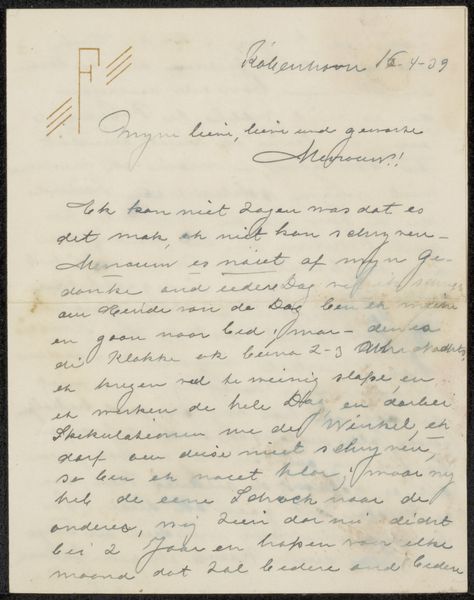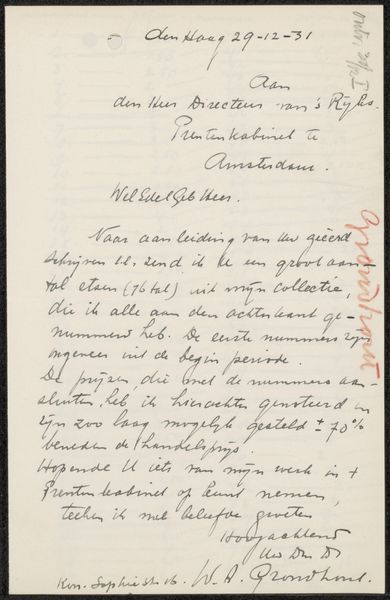
drawing, paper, ink, pen
#
drawing
#
aged paper
#
hand-lettering
#
dutch-golden-age
#
ink paper printed
#
hand drawn type
#
paper
#
personal sketchbook
#
ink
#
hand-drawn typeface
#
ink colored
#
pen work
#
sketchbook drawing
#
pen
#
sketchbook art
#
calligraphy
Copyright: Rijks Museum: Open Domain
Curator: This intriguing piece, titled "Brief aan Philip Zilcken," possibly dating back to 1898, gives us a direct glimpse into the artistic and social networks of the time. It's an ink drawing on paper, possibly a draft or sketch. Editor: There's a wonderful immediacy about it. It looks like a candid snapshot into someone's thoughts – a stream of consciousness captured through script and ink. There's an intimate, ephemeral feel. Curator: Indeed. Letters were essential for conducting artistic business in this era. Frits Lapidoth penned this letter. Letters formed relationships and managed art world affairs. The artistry is not just in the information shared, but in the elegance of the script itself. Editor: I find the consistent use of the handwritten typeface visually comforting, offering insight into design and visual choices. The age of the paper further suggests the letter's function, indicating the exchange was intended for reading, thinking, and decision-making, far beyond mere factual transfer. The aged quality reminds me of the past's hold over our present interpretation. Curator: Certainly, that calligraphic element speaks volumes. Each flourish seems deliberately chosen, carrying symbolic weight within the social conventions of written correspondence. Even in a hurried note, legibility and grace were evidently prized as societal values. The hand-drawn type hints to cultural expectations for art at the time. Editor: To me, the handwritten style adds warmth, making it more approachable than dry printed text. This also gives a strong, recognizable style, signaling Frits Lapidoth’s design sensitivity, doesn’t it? I wonder about the dialogue, negotiations, and sociopolitical forces at play. Curator: Undeniably. Analyzing this artifact allows us to enter an older system of communication, before instantaneous sharing. One almost imagines holding that physical note as we examine its digitally-preserved form now. Editor: Considering it, the value rests not only with Lapidoth, the penman and author of the communication, but also with those initial receivers, decision-makers who engaged this image within very personal networks. Curator: It provides an intriguing portal. A brief note transformed into an enduring record. Editor: Yes, I agree. It emphasizes how each material carries profound artistic expression from initial moment to its eventual place in the public arena.
Comments
No comments
Be the first to comment and join the conversation on the ultimate creative platform.
